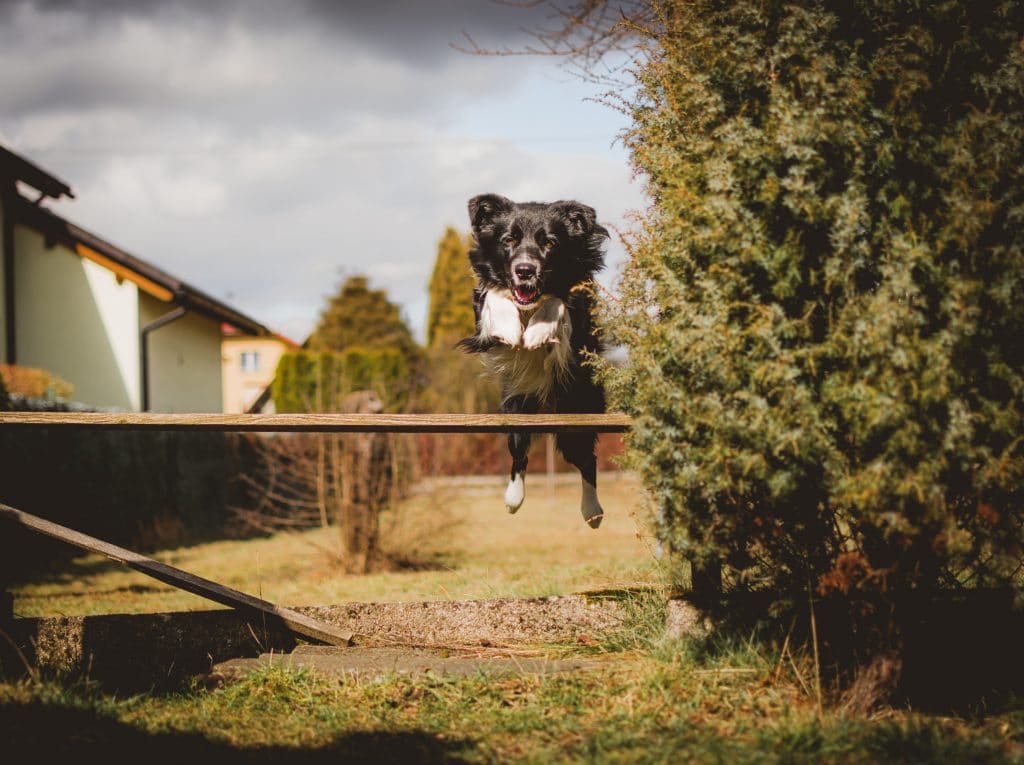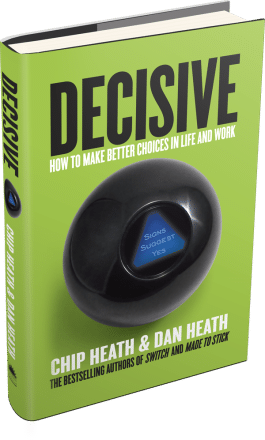“Making good decisions is a crucial skill at every level.” -Peter Drucker
Emotions are a finicky thing. Sometimes they help us and sometimes they don’t. Sometimes they aid us in making healthy decisions and sometimes they don’t. So, what do we do if we have a knack for letting our emotions interfere with decision making? As Chip and Dan Heath would say, you should “attain distance before deciding.”
In part one I spoke about narrow framing (Read part one here) and in part two, I discussed avoiding confirmation bias (Read part two here). Sometimes though, something else gets in the way. That something, is actually a someone, and that someone is us. We let our emotions cloud our judgment and we rush the decision-making process, if we even use a process at all. Which is why “short-term emotion” is Chip and Dan Heath’s third villain of decision-making.
We are angry that a driver cut us off, so we decide to tailgate them. We see a new pair of shoes on sale and, in a moment of excitement, we make the purchase. During a fight with a significant other, we decide the relationship isn’t worth the trouble and break up.

Emotions often get in the way, but they don’t control us, because we always have the ability to choose. As Victor Frankl has said,
“Between stimulus and response there is a space. In that space is our power to choose our response.”
When we acknowledge the space Frankl talks about we can have power over our emotions. But preventing emotionally charged decisions in the moment isn’t always easy. To combat this issue we need better strategies.
Attain Distance Before Deciding
So, our emotions can be little baby doodie heads and get in the way of important decisions. It begs the question, “What can I do about those suckers?” Author Suzy Welch offers a powerful solution called 10-10-10. It’s a series of three questions that we ask ourselves to help gain distance from our emotions.
We ask,
“If I decide on ‘x’ how would I feel about that decision 10 minutes from now?” “How would I feel about that decision 10 months from now?” “How would I feel about that decision 10 years from now?

Asking those three questions creates space from our emotions. By thinking of the impact the decision has on our future, we gain clarity on how much the decision may truly matter in the end. Sometimes though, we can simply ask a friend for advice.

At BSP NOVA, you are sent a questionnaire when you sign up for your 1-on-1 assessment & goal setting session. One question we ask is, “How would your best friend describe you?” It’s a great question because sometimes we feel weird and hesitant talking about ourselves. Asking what our best friend would say helps us feel more at ease describing ourselves. Similarly, in the case of making a tough decision we can ask ourselves,
“What advice would I give my best friend in this situation?”
The question allows us to think more critically about the decision, since we usually give the most pertinent information we can when giving advice. Sometimes though, even using all of the tools provided in these blogs so far, we can still be wrong. So, as Chip and Dean Heath would say, we should “prepare to be wrong.” Lest we fall prey to Chip and Dan Heath’s fourth and final villain of decision-making, which is overconfidence.
The Premortem And Preparade
We can’t always predict how life will unfold or how our decisions will turn out. There’s always a chance for something unexpected to happen and we should prepare for that as best we can. A useful way of doing this is by using what Gary Klein calls a “premortem,” and what the Heath brothers call a “preparade.”
A premortem is a tool we use to imagine a future where the decision we made went horribly wrong, and work backwards to figure out why. For example, let’s say you’re writing your first book and ask yourself, “It’s one year from today and my book has failed miserably. What happened?” You then brainstorm potential problems before they have a chance to become problems.

The problem could’ve been self-publishing instead of finding a publisher, or doing a poor job advertising. A premortem helps you consider future problems that could occur, so you can solve them in the present. On the contrary, you can also run a “preparade” for a situation which went incredibly well.
You might ask yourself, “It’s been one year since I started training at BSP and I’ve lost 50 pounds! How can I be ready for that?” That may sound silly to ask how you would be ready for that, but it matters. For example, maybe you have to buy a whole new wardrobe because none of your clothes fit now. Which, by the way, is a great problem to have.
Use A Tripwire
Sometimes we don’t always know that a decision needs to be made though. For example, maybe getting McDonalds 17.5 times a week became a habit overtime, so you do it automatically now. It’s hard to make a decision when we don’t know there’s a decision to make, which is where setting tripwires comes in (not the booby trap kind because those aren’t fun).
“Because day-to-day change is gradual, even imperceptible, it’s hard to know when to jump. Tripwires tell you when to jump.” -Chip Heath and Dan Heath
A common tripwire is a deadline but there can be other forms. Let’s say you’ve been working on a new project at work for a few months now, which was supposed to earn you about 10% more revenue, but you’ve had little to no luck with it. You’re chipping away at that tree day in and day out with no sign of it falling over.

In the example above, maybe you set a tripwire by saying, “Three months from now if our revenue has not increased by at least 3%, then we will pursue other options.” You now are free to work on the project for those three months knowing the tripwire will pop up to help you assess if you should change course or not.
We tend to be our own worst enemy when it comes to making good decisions. Often letting our emotions run the show and cloud our thinking when deciding. So, maybe we use the 10-10-10 idea to gain distance from those pesky emotions. And since there’s always something that can get in the way we can run a “premortem” or “preparade” to account for this. Or maybe set a tripwire to let us know when we should reexamine our decision.
The intent of these blogs is not to focus on the outcome of a decision, although that matters of course, but on the process. That’s why the fourth and final blog in this series is about the importance of following a process, and an easy way to remember all you’ve learned in these blogs.
Source:

Decisive: How To Make Better Choices In Life And Work by Chip Heath And Dan Heath
